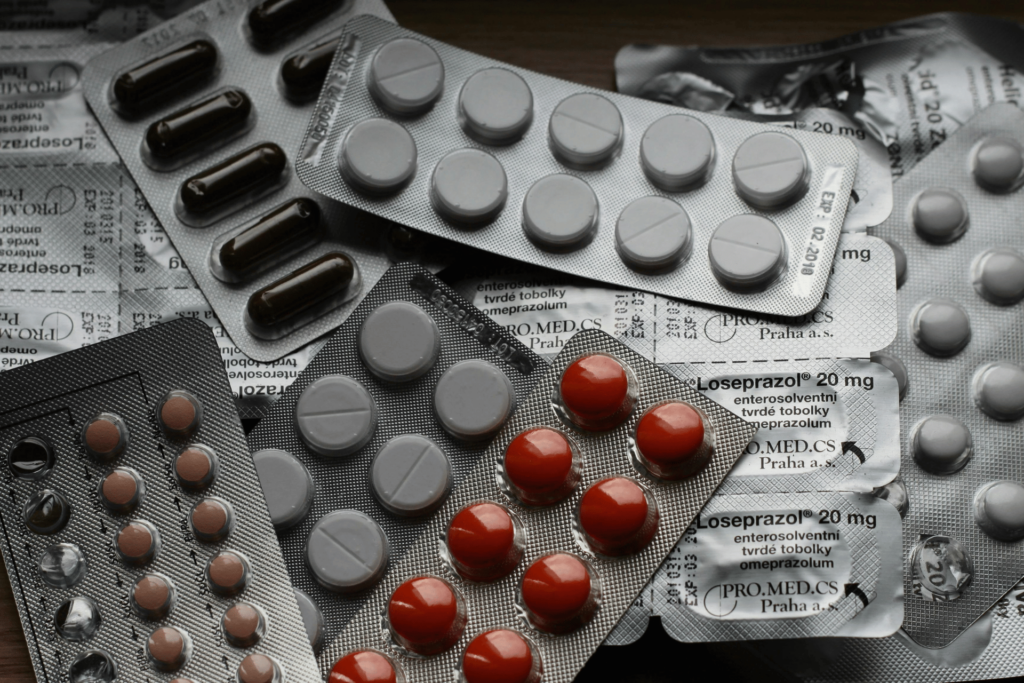Lower Triglycerides, Weight, and Diabetes Risk.
 You may be able to quote your cholesterol level—even if you don’t remember your social security number. But what do you know about another critical blood fat—triglycerides?
You may be able to quote your cholesterol level—even if you don’t remember your social security number. But what do you know about another critical blood fat—triglycerides?
If you’re drawing a blank, that’s too bad, since high triglyceride levels are as dangerous as—maybe even riskier than—high cholesterol. For example, women with high triglycerides—even if their cholesterol levels are normal—have higher risk for cardiovascular disease.
High triglyceride levels are commonly linked to metabolic syndrome (or prediabetes) and Type 2 diabetes, not to mention inflammation of the pancreas. High levels of these fats may also signal liver problems, in which fatty acids are poorly broken down and utilized, or even thyroid dysfunction.
One-third of American adults have triglycerides that are too high or borderline. You want to keep triglycerides under 100 mg/dl. Even more important is the triglyceride/HDL (“good”) cholesterol ratio, which should be below 2 (triglycerides divided by your HDL number).
Dr. Ann Louise’s Take:
If you have a roll of fat above your waistline, you probably have high triglycerides. Get a blood test to see.
Fast for at least 12 hours prior to blood testing for triglycerides. And be aware that taking vitamin C and certain medications—even before that 12-hour fast—can throw off your triglyceride level, resulting in an inaccurate reading.
Lower Triglycerides
Eating too many sweets, drinking too much alcohol, being overweight, and not getting enough exercise can raise triglycerides. Research at Brookhaven National Laboratory has found that people on a high-sugar, low-fat diet had triglyceride levels two to five times higher than those on a low-sugar, high-fat diet.
Cut down on refined foods, fried foods, and especially sweets. Even too much fruit or juice can raise triglycerides in some people.
Could it be a coincidence that triglyceride levels started going through the roof just when manufacturers began slipping high-fructose corn syrup (HFCS) into our food supply? The human body doesn’t recognize HFCS, so foods sweetened with it slip right past our natural appetite-suppressing mechanisms, packing on the pounds.
Maintain a Healthy Weight
Increase your metabolic rate by exercising regularly—and make sure your diet includes plenty of chromium, an essential trace mineral that boosts metabolism. It’s available in brewer’s yeast, prunes, nuts, unprocessed whole grains, even black pepper.
As many as 9 out of 10 Americans are low in chromium, which also helps explain why triglycerides are too high. The artificial sweetener aspartame (found in over 3,000 processed foods) can also deplete chromium, as do refining grains.
This essential mineral makes insulin more effective in regulating blood sugar and helps fight Type 2 diabetes. Chromium supplements lower body fat, reduce sugar cravings, and increase muscle mass—all important for people watching their weight.
Because this mineral also helps lower triglycerides, take Fat Flush Weight Loss Formula with 400 mg of chromium, plus acetyl-L-carnitine and other metabolism-boosting nutrients, to support safe weight loss.
This stimulant-free supplement helps balance blood sugar and boost fat metabolism. It even increases your energy level so you feel like exercising more often.
Sources:
https://www.ncbi.nlm.nih.gov/pubmed/19337698
https://www.ncbi.nlm.nih.gov/pubmed/19509199










25 Responses
In reading through some of the older blogs I noticed that you no longer recommend Teechino or Stevia– Is this correct and could you please explain ??
Thank you Dr. Ann for your efforts to bring us the best in these great health blogs!
I was never able to find an answer and not even from a doctor as to why would one have borderline high LDL, high HDL(70), high cholesterol, but low triglycerides (60)! shouldn’t also triglycerides be high?. Also, if HDL is high why would LDL be high?
Martha: Both Teechino and Stevia Plus are both excellent products, for sure, but were finding that many of my dieters were “overdoing” too much of a good thing to the detriment of the other Fat Flush protocols.
Fatima: Sounds like there is oxidative stress occurrring in the system – especially with the high LDLs. I use Oxi-Key for these situations because of high SOD. Low triglycerides may show carb metabolism challenge.
Thank you. I will check out Oxi-key.
Hi Ann Louise. Sorry, I know this is a different topic, but haven’t received an answer to the following comment that I recently posted on your copper page. (I’m thinking perhaps no one looks at the pages on older posts):
I know that coffee and black tea are both high in copper, but have been unable to find any data on the copper content of green tea. Can you tell me whether it’s high in copper, too, and also whether drinking it at the same time as eating something acidic, like grapefruit or drinking it with lemon juice, would increase the absorption of the copper? (I know, for instance, that eating iron-rich foods with something acidic increases the absorption of iron, and thought it might be true for copper, too.)
Thank you for your reply. Your books and website have been incredibly helpful to me, over the years.
Carol
I take one CLA and one GLA pills daily plus 1 apple cider pill form (mason) plus my one a day vitamin, one a day
5 Baby aspirin, vitamin c, calcium, and i vitamin b 12 sublingual, I am 64,
I had my blood work the results are:
1-cholesterol: 218 (range 1-200)
2-triglycerides: 151 (range 0-190)
3-HDL: 42 40-80 (range 42 (range 40-80)
4- LDL: 146 ( (130)
5- glucose: 127 (0-200)
please put me on the right track as far pills taken, also I will be traveling over seas for 2 months (can’t use my cranberry/water drinks AND the flax seeds
thanks very much
maha
Carol: Thanks for your comments. I have not been able to locate data on green tea, either, but intuitively feel it is less copper-laden than darker teas. That being said, dandelion root would be better because it helps the liver which is involved with copper metablism. Copper is not an acidic-based mineral like iron- so moderate citrus would be OK.
Maha: For my personal clients I suggest Weight Loss Formula (great for diabetics due to the chromium and l-carnitine), Super EPA (helps lower cholesterol and triglycerides) as well as Oxi-Key (high in antioxidants including crucial SOD that most blends don’t contain). Your diet is key here. Why don’t you become a Fat Flusher and our moderators can help guide you even further on the wwww.annlouiseforum.com?
Hi Ann Louise; I just got a scary wakeup call yesterday. I recieved results from a blood test. I have high triglycerides and high ldl. Could I take flax seed oil instead of fish oil? I don’t like the after taste of the fish oil. Any other suggestions?
Thanks,
Cindy
Yes re flaxseed oil and Oxi-Key is what I would take for high LDL…
Thank you..
Thank you Ann!
Carol
Anna louise We’ve the same middle name love it.To my question,I’ve ringing in my ears can you help.Thank you
Hi Dorothy: For ringing in the ears: check out heavy metals (TMA or tissue mineral analysis) and a good chiropractor who specializes in the neck and cranial bones.
For ringing in the ears: check out heavy metals (TMA or tissue mineral analysis) and a good chiropractor who specializes in the neck and cranial bones.
Actually, Ann Louise is my first name – but I do like your middle name
New question. I am fat flushing in the tropics. I live most of my year in Bali Indonesia since retirement. I can get flax seeds. I noticed on the
Protein powder you can substitute coconut oil for flax oil. I cannot get flax oil and delicious coconut oil is abundant here. The problem with virgin coconut oil is when cold it hardens so it coats the fruit bits after being whirred in the blender. Any suggestions?
Also, cannot easily get cranberry juice here so I brought powdered with me. purchased from SharWebLabs.com (Port Orange, FL….888-476-9414 Organic Country of origin USA
Thank you for comments and suggestions. I have lost 12lbs and 9 inches in 3 weeks. I am 64.
Blessings! Lela
Annalouise
I had the TMA my toxic metal levels are in the acceptable range now what do i do.someone said it could be low manganese have you heard this before.Dorothy
Lela: Let the virgin coconut oil soften at room temperature. It will be fine. Great results.
Dorothy: I am sure that Liz at UNI KEY will be happy to help you decipher your results which include much more than the heavy metal read-out. You will need to explore how the mineral ratios are impacting your glandular health especially sodium to magnesium (adrenals), calcium to potassium (thyroid), and calcium to magnesium (blood sugar stability.)
Dear Ann Louise: I have been a “lurker” around your site for a couple of years, even ordered a few things a time or two..
How do I just get started and where do start? I am 48 and was just given a blood test that showed very slightly, over the border line, into insulin resistance! I have been scouring the internet reading and reading, because of course, the doctor wants to put you on metformin right away. I say no way! Whatever the cut-off line was, my levels were only .6 above that! So, shouldn’t the blood test be repeated?
And, yes, I am overweight, and I don’t exercise regularly and I am stressed to the max with running a small business. I just really don’t know where to start, but I feel like I am starting to fall apart. Hot flashes are starting, weight gain, and now this diagnosis! Where do I start, what should I do? Thank you so much if you have time to answer.
Islandgirl: The Fat Flush Kit (Dieter’s Mult, GLA-90’s, and Weight Loss Formula) will do wonders as will CLA. All of these will help with your perimenopausal symptoms as well. Books for your consideration: Before the Change and/or Fat Flush Plan. But the supplements, from what 15 years of testimonials report, will help immeasureably.
I like your response about ringing in the ears. I would, however, like your input on another aspect of ringing in the ears.
I have never had the usual syptoms that indicate high blood pressure–head ache, blurred vision, dizzzyness when rising from a sitting/lyingdown position, etc. The only clue I have ever had is the volume increase for ringing in the ears. When tested, there was a mild/boarderline high blood pressure & barely noticable ear-ringing; when the ringing became so loud it would be comparable to screaming in my ears? The blood pressure reading had both Sys. & dys. in the 200s. At that time, paramedics thought I was falsifying data to them when I said I did not have any of these other symptoms–that usually when they got to a patient with that high a reading, they were passed out in the floor or had already been victim of a stroke, etc.
Do you have any recommendations for things that can be done to bring the numbers down quickly, without going via the paramedica & ER?
Magnesium (400 mg) once or twice per day as well as the GLA-90’s (4, 2 times daily) have been used in these types of situations. Please call UNI KEY to order or get more info. OR these products are available on line. I always refer to the UNI KEY products because they have been servicing my readers, clients, and fans for nearly two decades and I am assured of their quality control and raw materials suppliers, whom I visit and inspect regularly. Thank you.
Thank you Ann! Do you recommend I start with the entire Fat Flush progarm, or the Fast Detox kit? I need to just pick one thing, one program and start with little changes! I read so much, then I can’t decide, do i do South Beach, Fat Flush, Weight Watchers, etc… then I am confused and decide to do nothing… which lead me to the shape I am in! I wish I could be a ‘project’ for you. Take before pictures, follow a program, then be a real life example. I just need a place to go for support. It’s time for a change! I am sick of me!
Fat Flush, Fat Flush, Fat Flush….You will find unbeatable support on http://www.annlouiseforum.com. Yes, take your before pictures and get on the program OR try the Smoothie Shakedown. Either way, join the Forum and my moderators will greet you with open arms
Dear Friends:
I would love to answer each and every single one of your queries, as I have done to the best of my ability, in the past. The popularity of this Blog has grown to the extent that I can no longer provide that service but I am in the planning stages of an Internet – TV show where you can call in and get those questions answered by me in person! Please stay tuned for this exciting development. I first must complete a new manuscript and then will make some exciting announcements. In the interim, may I suggest that if you have questions about products, call UNI KEY at 1-800-888-4353. The folks there are helpful and will direct you accordingly. If you are concerned about a particular health condition, then by all means check out the Testing Kits on my site which will help you to determine underlying causes. Please don’t let this dissuade you from posting. Thank you so much for your enthusiasm and interest!
Ann Louise-
You mention Ox-Key in your Fast Track Detox Diet book. Is this a supplement that you sell or can be bought at the local health food store?
OxiKey is the supplement and it is available at http://www.unikeyhealth.com